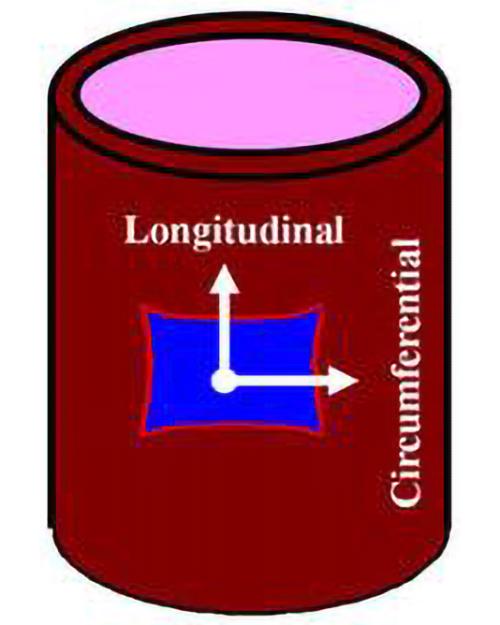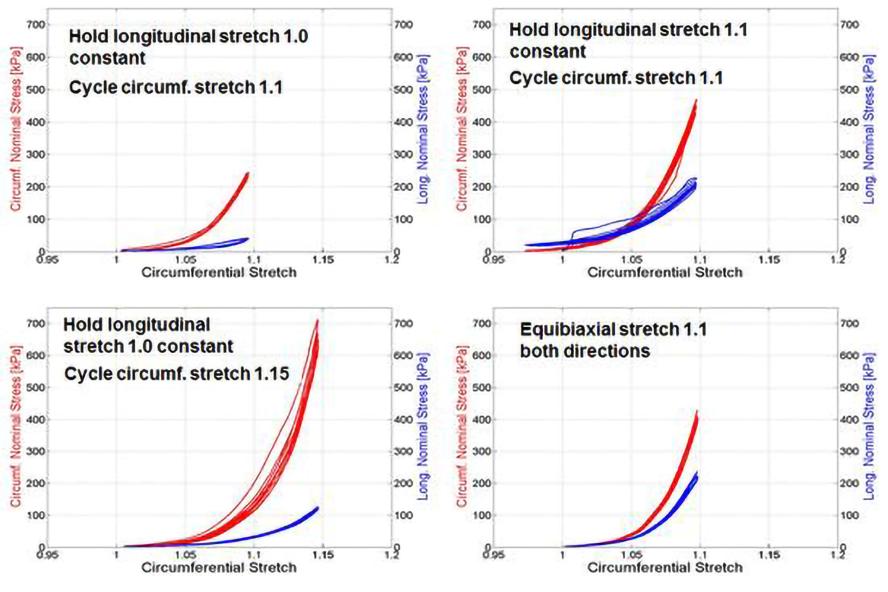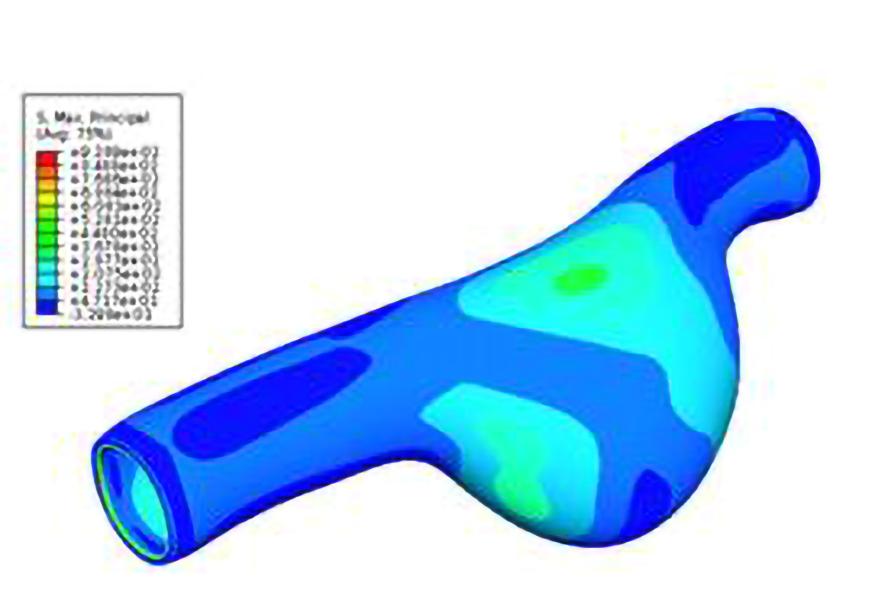Biomechanics
Abdominal Aortic Aneurysm (AAA)

The primary aim of this multidisciplinary research is to develop an integrated approach to analyze abdominal aortic aneurysm (AAA) biomechanics, wall stress development and rupture risk for single patients. The transformative impact is that all steps of the analysis will be fully based on information exclusively derived from that patient, including lesion shape, wall material properties, experimentally measured flow field characteristics and wall pressure, and wall stress computation.
The proposed studies represent an integrated, interdisciplinary approach blending biomaterials science with medical imaging and biomechanics in a combined experimental-computational protocol. Establishment of a methodology for accurate assessment of AAA wall stress with physiologically derived loading has the potential to significantly impact clinical AAA management, and to save millions of dollars just through avoided unnecessary surgeries.

Figure 1: Max Principal Stress Distributions for Non-Uniform, Systolic Loading Conditions

Figure 2: Maximum principal stress (kPa) for the whole abdominal aortic aneurysm model.

Figure 3: Maximum principal stress (kPa) for half the abdominal aortic aneurysm model with the scale adjusted to exclude stress concentrations at each fixed end.
Publications
- Lin WJ, Iafrati MD, Peattie RA, Dorfmann L (2019) Non-axisymmetric dilatation of a thick-walled aortic aneurysmal tissue. Int J Nonlinear Mech 109:172-181.
- Ahamed T, Peattie RA, Dorfmann L, Cherry Kemmerling EM (2018) Pulsatile flow measurements and wall stress modeling in a patient specific abdominal aortic aneurysm. ZAMM - Z Angew Math Me 98:2258-2274.
- Lin WJ, Iafrati MD, Peattie RA, Dorfmann L (2018) Growth and remodeling with application to AAA. J Eng Math 109:113-137.
- Pancheri FQ, Peattie RA, Reddy ND, Ahamed T, Lin W, Ouellette TD, Iafrati MD, Dorfmann L (2017) Histology and biaxial mechanical behavior of abdominal aortic aneurysm tissue samples. J Biomech Eng 139, 031002.
- Peattie RA, Golden E, Nomoto RS, Margossian CM, Pancheri FQ, Edgar ES, Iafrati MD, Dorfmann L (2016) A technique for comparing wall pressure distributions in steady flow through rigid versus flexible patient-based abdominal aortic aneurysm phantoms. Exp Techniques 40:1187-1201.
- Ahamed T, Dorfmann L, Ogden RW (2016) Modelling of residually stressed materials with application to AAA. J Mech Behav Biomed Mater 61:221-234.
- Dorfmann A, Wilson C, Edgar ES, Peattie RA (2010) Evaluating Patient-Specific Abdominal Aortic Aneurysm Wall Stress Based on Flow-Induced Loading. Biomechanics and Modeling in Mechanobiology 9:127-139.